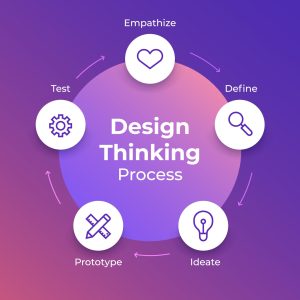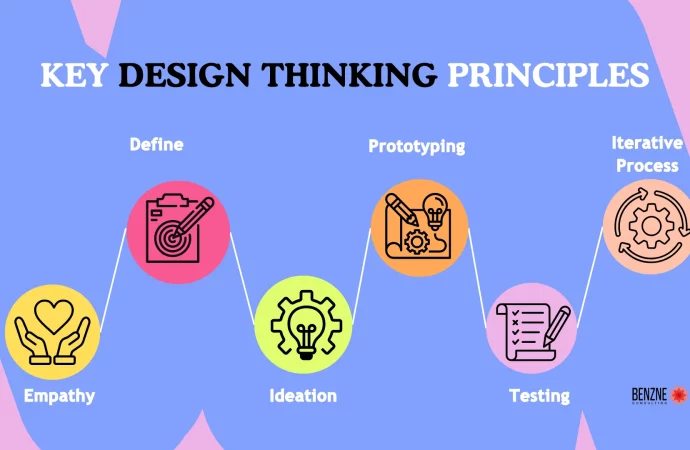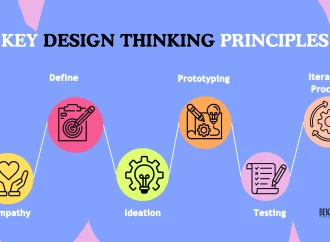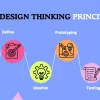Introduction In today’s competitive landscape, fresh ideas and adaptable solutions are essential for success. A Design Thinking Workshop offers a dynamic approach to tackling challenges by combining creativity, strategy, and empathy. This hands-on method empowers individuals and teams to think beyond traditional solutions and develop ideas that truly connect with people’s needs. What Is Design
Introduction
In today’s competitive landscape, fresh ideas and adaptable solutions are essential for success. A Design Thinking Workshop offers a dynamic approach to tackling challenges by combining creativity, strategy, and empathy. This hands-on method empowers individuals and teams to think beyond traditional solutions and develop ideas that truly connect with people’s needs.
What Is Design Thinking?
Design thinking is a way of solving problems by focusing on the people who are affected by them. Instead of jumping straight into solutions, you first learn about the real needs of the users. You then come up with ideas, test them out, and improve them until you find something that works well.
This process has five main steps:
- Empathize: Understand the people you’re designing for
- Define: Clearly state the problem you want to solve
- Ideate: Brainstorm and come up with different ideas
- Prototype: Build simple versions of the ideas
- Test: Try out the ideas with real users and learn from the feedback
When you follow these steps, you often end up with creative and useful results. It’s a flexible method that works in any setting—from schools to startups to large companies.
What Are Design Thinking Workshops?
Design thinking workshops are short, hands-on events where teams use the design thinking process to tackle a specific challenge. These workshops can last a few hours, a full day, or even multiple days.
The goal is not to come up with a perfect answer right away, but to explore new ideas, work as a team, and move closer to a great solution. Workshops are filled with fun, creativity, and teamwork. They include brainstorming sessions, drawing on whiteboards, building mock-ups, and testing ideas with real users.
They are led by facilitators who guide the group through each step, making sure everyone is involved and the session stays on track.
Understanding Design Thinking
Design Thinking is a human-centered approach to problem-solving that prioritizes understanding users before jumping into solutions. Instead of relying solely on logic or assumptions, it blends research, creativity, and testing to uncover practical yet innovative answers.
The methodology generally follows five core stages:
- Empathize: Step into the user’s world to grasp their needs and challenges.
- Define: Turn observations into clear, actionable problem statements.
- Ideate: Explore a wide range of creative ideas without restrictions.
- Prototype: Build quick, low-cost models of potential solutions.
- Test: Share prototypes with users, gather insights, and refine.
This cycle is flexible, often looping back to earlier steps as new discoveries emerge.
Why Choose a Design Thinking Workshop?
Workshops offer a space where participants can experience Design Thinking firsthand. They go beyond theory, guiding attendees through activities that bring the method to life. The benefits include:
- Collaboration Across Roles: Breaks down barriers between departments.
- User-Focused Mindset: Ensures solutions match real needs, not assumptions.
- Boosted Creativity: Builds confidence to experiment with unconventional ideas.
- Actionable Skills: Provides tools that can be used in everyday problem-solving.
What Happens in a Design Thinking Workshop?

Image by: Yandex.com
A well-planned session moves participants through the five stages while keeping energy and engagement high.
- Setting the Scene: Begin with a mindset shift, encouraging open communication and curiosity.
- Building Empathy: Use research tools such as interviews, observation, or journey mapping to understand the user experience.
- Framing the Problem: Narrow down the challenge into a clear statement that focuses on human needs.
- Generating Ideas: Apply brainstorming games and creative exercises to spark innovation.
- Creating Prototypes: Turn concepts into quick representations from sketches to mock-ups.
- Testing and Refining: Share prototypes, gather reactions, and improve based on feedback.
Who Can Benefit Most?
One of the strengths of Design Thinking is its versatility. It can be applied across industries and professions, making it useful for:
- Leaders aiming to innovate their strategies.
- Marketing teams designing campaigns that connect with audiences.
- Educators crafting engaging learning experiences.
- Social enterprises solving community challenges.
- Startups seeking a competitive edge.
The Value It Brings to Organizations
When organizations adopt Design Thinking, it often sparks a cultural shift. Teams become more open to trial and error, guided by real-world feedback rather than assumptions. This fosters collaboration, speeds up problem-solving, and reduces the risk of developing solutions that miss the mark.
It also saves resources. Testing small-scale prototypes before committing to a full rollout ensures ideas are validated early, cutting down on wasted time and money.
How to Make the Most of It
To get maximum value from a Design Thinking Workshop:
- Stay Open-Minded: Be ready to explore unfamiliar territory.
- Participate Actively: The process works best when everyone is engaged.
- Mix Perspectives: Include people from varied backgrounds for richer ideas.
- Record Everything: Keep notes, sketches, and feedback for future projects.
- Apply Learnings: Bring the techniques into daily workflows.
Structure of a Design Thinking Workshop
A well-structured workshop follows a flow that keeps participants engaged and productive while moving through the stages of Design Thinking.
1. Setting the Stage
The facilitator introduces the method, establishes a safe and open environment, and sets expectations for creative collaboration.
2. Empathy Building
Through interviews, role-playing, or observation, participants immerse themselves in the user’s experience to uncover valuable insights.
3. Defining the Challenge
Using empathy findings, the group shapes a clear and focused problem statement that guides the rest of the process.
4. Generating Ideas
Creative exercises help participants brainstorm freely, pushing beyond obvious solutions to find fresh possibilities.
5. Prototyping Concepts
Ideas are turned into quick, tangible representations — anything from paper sketches to interactive mock-ups — to visualize potential solutions.
6. Testing and Feedback
Prototypes are shared with users or other participants to gather constructive feedback for improvement.
Who Benefits Most from Design Thinking Workshops?
One of the strengths of this method is its flexibility. It’s not limited to product design or tech industries — almost anyone can benefit:
- Business Leaders looking for innovative strategies.
- Marketing Teams aiming to better connect with their audience.
- Educators designing engaging learning experiences.
- Nonprofits addressing community challenges.
- Startups seeking to differentiate themselves in competitive markets.
The Organizational Impact
When companies embrace Design Thinking, it often transforms their culture. Teams learn to see challenges as opportunities, become more comfortable with experimentation, and make decisions informed by real user feedback.
The method also minimizes the risk of launching ineffective solutions. By testing early and often, businesses can avoid wasting time and resources on ideas that don’t resonate with their audience.
Conclusion
With expert guidance from Simon Banks, a Design Thinking Workshop can transform the way people approach challenges, inspiring inventive thinking and practical solutions that create lasting value.
Final Insight
A Design Thinking Workshop is more than an event it’s a catalyst for innovation. By centering on empathy, collaboration, and experimentation, it equips individuals and organizations with the mindset and tools to craft solutions that make a real difference.
When approached with commitment, the impact extends far beyond a single session, shaping how teams think, work, and innovate in the long run.






















